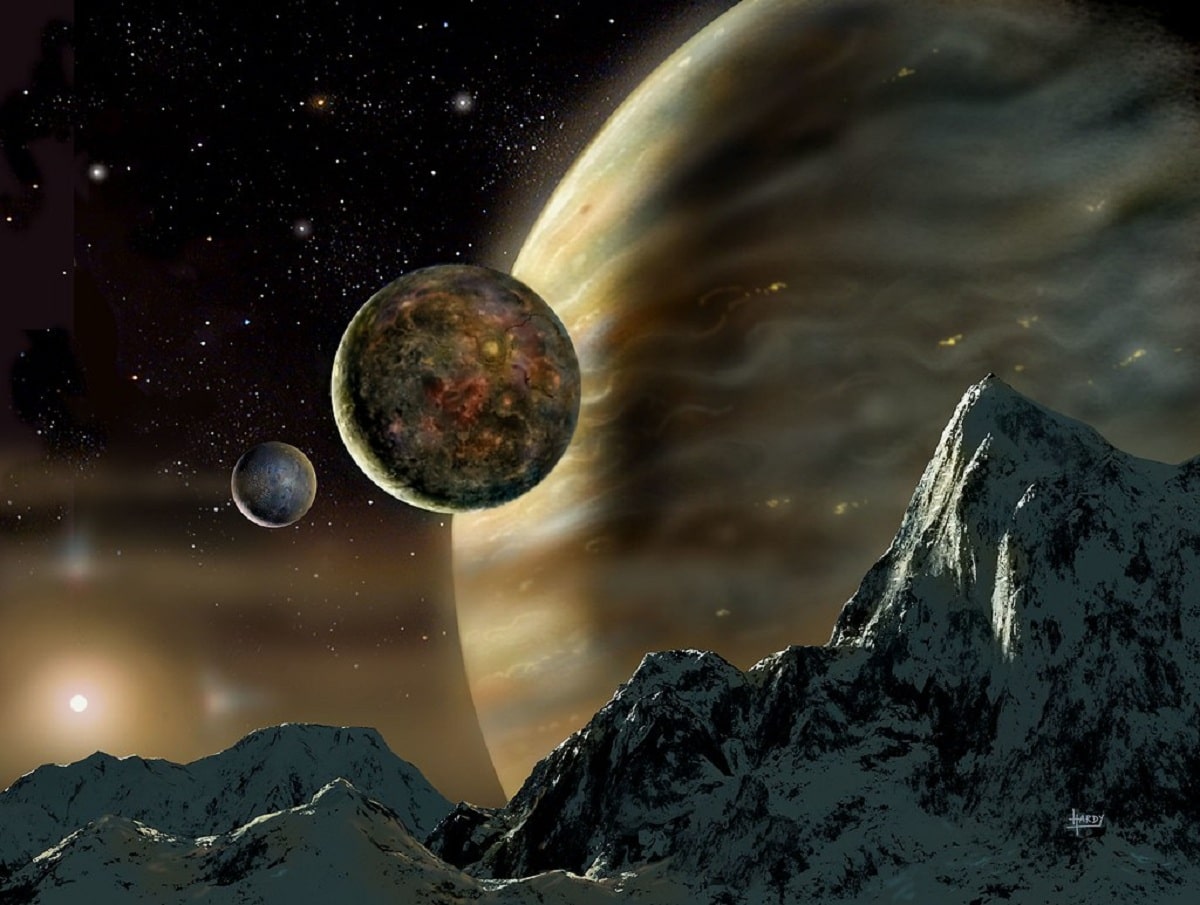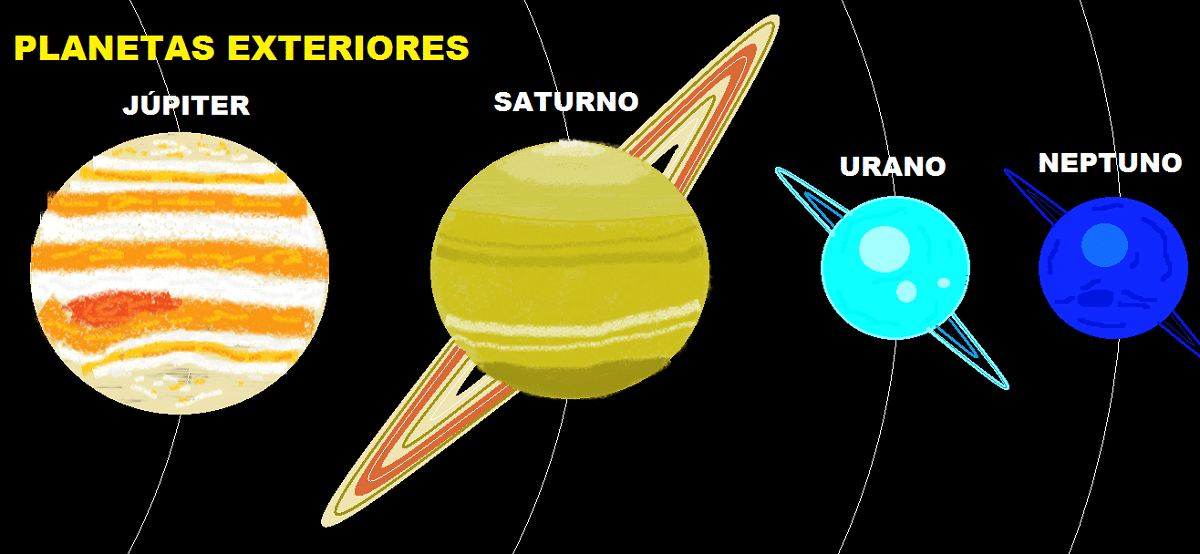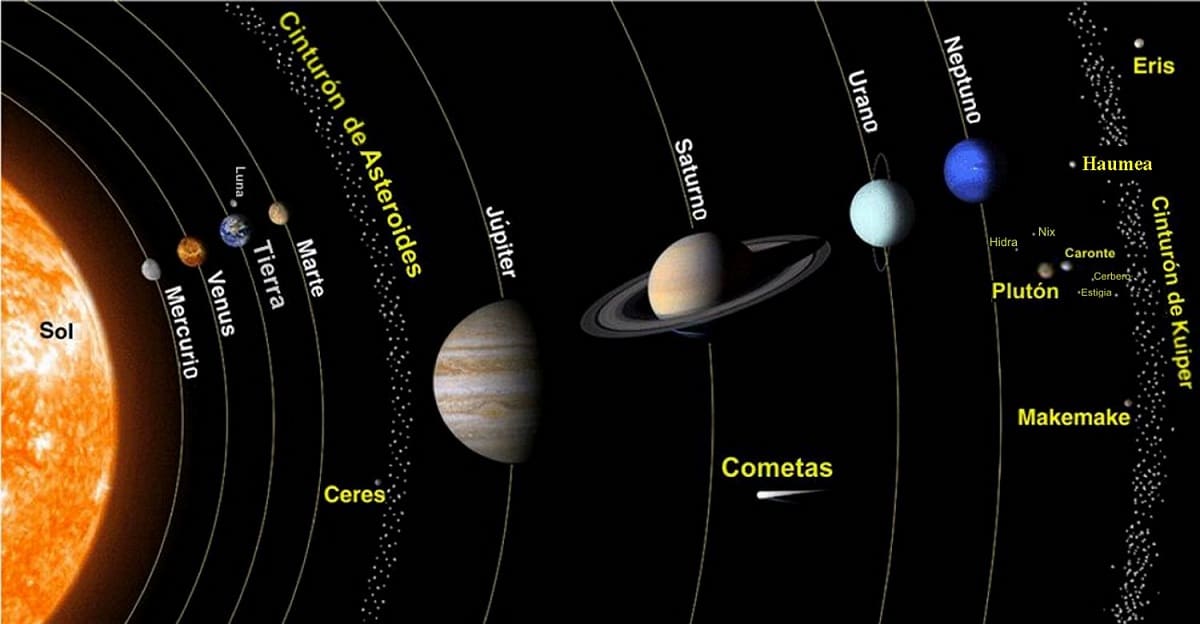
When we analyze all the planets of the solar system, we have to divide them into two types according to your situation: inner planets y Outer planets. Today we are going to focus on explaining which are the outer planets and their main characteristics. These planets are those that are located beyond the asteroid belt. These planets are known by the name of gas giants.
In this article we are going to tell you about the characteristics of the outer planets and some curiosities.
Outer planets

As we mentioned at the beginning of the article, the outer planets are those that they are located after the asteroid belt. Among the main characteristics that these planets have is that they are known by the name of gas giants. This name comes from its morphology. And is that these planets are large masses of gases that are rotating around the sun. It is true that these planets have a solid core. However, if you don't get to pass right through the center of the planet you would be able to pass through them.
It must be remembered that, to this day, Pluto it is not considered a planet. Among the group of outer planets we find the following: Jupiter, Saturn, Uranus y Neptuno. All of these planets share similar characteristics. For a celestial body to be considered a planet, it has to meet some rules. The first is that it cannot have its own light. The second is that it is large enough that gravity is not continually shaping the shape. Lastly, the third rule is that it must be large enough so that gravity is able to attract everything around and clear other bodies from its orbit zone.
Another requirement that is not stated in consensus with the scientific community is that it must orbit a star. Some of the characteristics that these outer planets share in common is that they are surrounded by rings and have many satellites. We are going to analyze each of the outer planets and tell what their main characteristics are.
Jupiter
Jupiter is the largest planet in the entire solar system. Its mass is double that of the rest of the planets put together. If we compare the size with that of planet earth, Jupiter is 1317 times larger. If you go to the surface you can see that, the more advanced to its core, there are gases that are being compressed. These gases are hydrogen, helium, and argon. These three gases are the main elements that exist on Jupiter. If we get closer to the nucleus, these gases are compressed and take on the appearance of a rocky structure.
Later, the nucleus, we see that it is a rocky form that is formed by these elements but in a frozen state. No rock as such has been found to date. Hence the name of the gas giant. One of the things that most attracts the attention of Jupiter is its large round and red spot. This spot indicates a strong storm that seems to have been formed for more than 3 centuries and is still active today. Given the size of the planet, the red spot appears small. But if we compare it with the diameter of the earth, it is larger.
This planet has the fastest rotational motion in the entire solar system. A day on this planet only lasts 10 hours. However, it takes 12 years to go around the sun. It has approximately more than 60 moons and all of them are very famous. It is the oldest planet in the entire solar system.
Saturn
Saturn is the planet best known for its rings. It is the only one that has the rings visible from the ground. The size of Saturn compared to Earth is 750 times larger. Around its orbit we find about 62 satellites. One of them is well known by the name of Titan and is known to have had an atmosphere similar to ours a long time ago. It is not the only planet that has rings, but it does have the most. Rings are made up of very small elements the size of a grain of sand. We also found other elements the size of a mountain.
It is not well known about the rotation period since it does not have a solid surface. Its atmosphere is spinning at different speeds. This speed depends on the latitude. As with Jupiter, hydrogen and helium are the main gases in this atmosphere. The translation movement is 30 years.
One of the characteristics for which this planet stands out is its strong winds. And this can be found clouds formed by crystals of ammonia and strong winds of up to 450 meters per second. At its north pole there is a cloud formation for which science still has no answer. It is known as the hexagon of Saturn.
Uranus
The planet Uranus has a nucleus but the difference with the previous ones is that it is covered with an icy mantle that reaches the surface. The atmosphere is composed mainly of hydrogen and helium. The nucleus is very small in size. It must be said that this planet has a more blue color because almost the entire planet is ice.
Its translational motion is 84 Earth years and it is located at an average distance from the sun of 3.000 million kilometers. The rotational movement is not well known since it is not homogeneous at all latitudes. One of the characteristics for which this planet is peculiar is the inclination of its axis. This makes one of the poles always facing the sun. It is the reason why Uranus It has periods of 42 years of light and another 42 years of darkness.
Neptuno

It is the last of the group of outer planets. It is the farthest planet in the entire solar system. It is also the smallest in size, although it is still fourth by diameter in the entire solar system. It has a gravity very similar to our planet despite its smaller size. Its rocky core is made up of silicates, nickel and iron. A great icy mantle and an atmosphere made up mainly of hydrogen, helium and methane gas is what reigns on this planet.
This atmosphere we also find some violent storms in which we find winds with speeds of up to 2200 kilometers per hour. 14 satellites are currently known to orbit it. The most famous of them is Triton.
I hope that with this information you can learn more about the outer planets and their main characteristics.